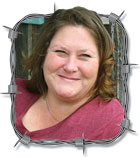 The face of American agriculture is changing.
The face of American agriculture is changing.
As the average age of the American farmer and rancher increases, there has been a great deal of concern regarding who will take over operations. But there’s a new wave of producers slowly making their way into the industry.
In a new study, “Overview of Beginning Farmers and Ranchers,” written by Nigel Key and Greg Lyons of the USDA’s Economic Research Service, between 2013 and 2017, the U.S. farm sector included an average of 339,400 beginning farms and 898,100 beginning operators. These beginning farms and ranches accounted for 17 percent of all farms in the United States and 8 percent of agricultural production.
Beginning operators and producers in the study are defined as someone with fewer than 10 years of experience on any farm, and about 30 percent of beginning operators or owners are 35 years and younger.
Most new farmers and ranchers specialize in beef cattle production and row crops, specifically corn, soybeans, wheat and sorghum, according to the study. Beginning farms also comprised about 19 percent of poultry and other livestock (sheep, goats, aquaculture and other industries) producers, but only about 10 percent of beef cattle producers. Twelve to 15 percent of cash grain/oilseed, field crop, high-value crop (fruits and vegetables) and rice/tobacco/cotton/peanut (one category) producers were beginning farmers.
The overall production levels of new farmers/ranchers or operators may seem like only a small percentage of total production, but everyone has to start somewhere.
Other changes noted in the study include:
• Beginning producers operate on a smaller scale, earn less farm income and have more debt relative to assets than established farms.
• New farmers and ranchers work more off the farm and have less wealth and more debt obligations. Sixty-seven percent of beginning farmers hold off-farm jobs; 45 percent of established producers did so.
• Most operations are small, but production is concentrated on large-scale farms. Only 2 percent of beginning farms have an annual output of $1 million or more, but those farms account for more than half of all production from beginning farms.
The study shows there’s a concentrated effort to get back to the farm by younger people, an initiative that continues to gain momentum.
For those who grew up on farms, there were times they couldn’t wait to ditch their daily chores and small towns and head to the “big city” to see what wonders it held. It would be a wondrous place in the city. In the city you could wear your “good clothes” and not worry about ruining them before lunch. Encounters with squirrels while on a walk on a paved path a well-manicured park was the only time anyone had to look out for critters. Yes, sir, life was going to be much more comfortable in the city, at least it looked that way on television.
Meanwhile, there were city kids who longed to be farmers. They wanted boots, boots that were meant to get dirty. They wanted to milk cows, wrangle chickens, ride a tractor seat and have a real horse. The thought of having more land than a backyard and livestock was a dream they visualized while watching reruns of “Green Acers” and “Little House on the Prairie.”
I’ve had the opportunity to meet some of the beginning producers/operators in the Ozarks who fall into the parameters of the study, and they are an excited group. They are eager to learn, excited to share and excited to see the products of their labor. They are delighted to be involved in agriculture.
Let’s share that excitement and encourage new producers to follow their dreams. Share a little advice with them when they ask, be open to their ideas and remember your excitement when you were in their shoes.
Julie
Julie Turner-Crawford is a native of Dallas County, Mo., where she grew up on her family’s farm. She is a graduate of Missouri State University. To contact Julie, call 1-866-532-1960 or by email at [email protected].





